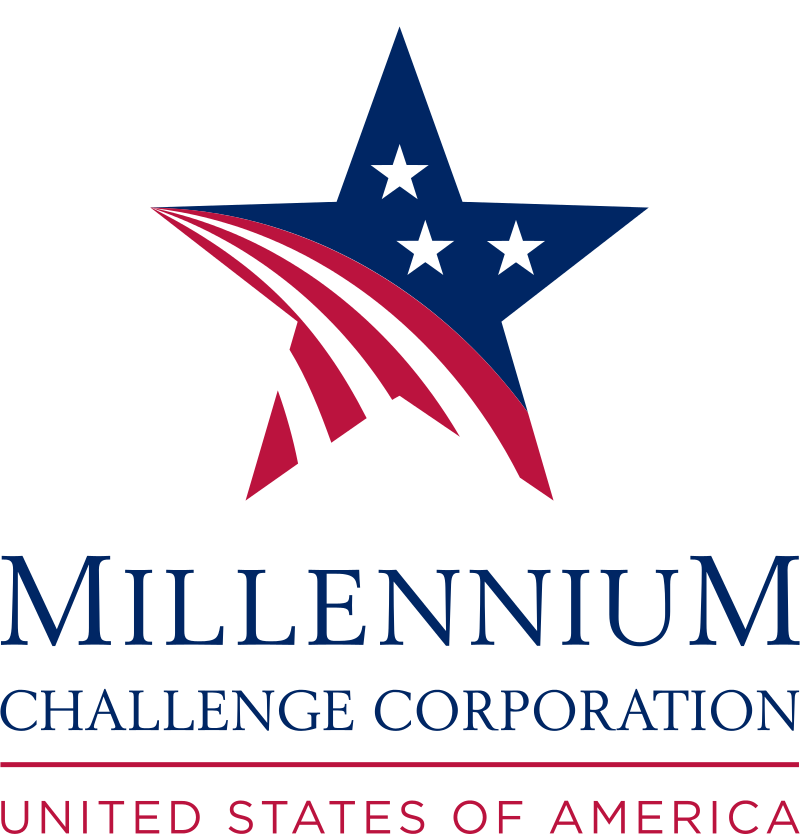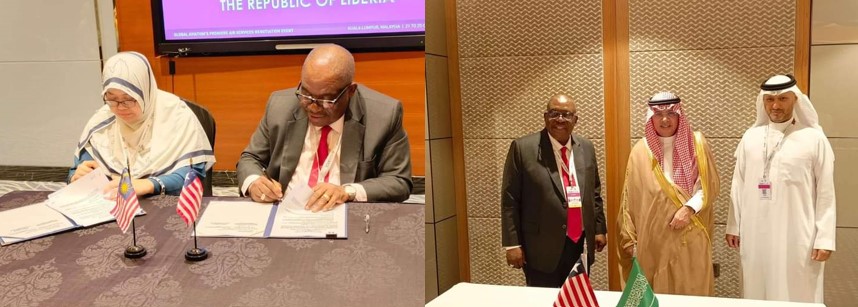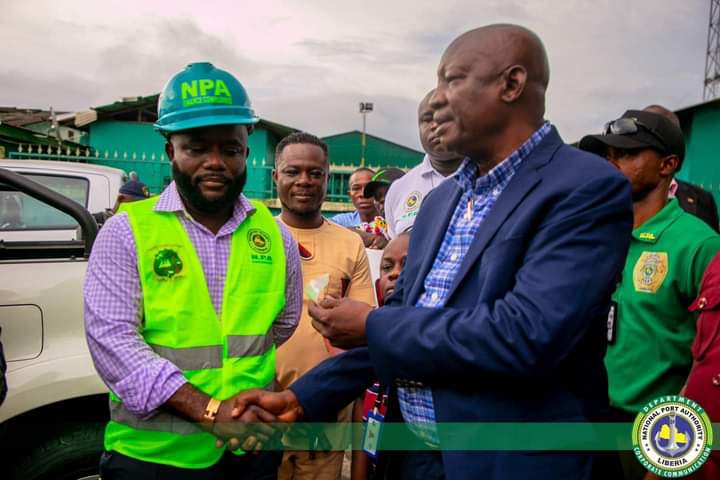IPNews-Monrovia: Liberia is among 60 countries across the world that have been declared eligible candidates for the recipient of the Millennium Challenge Compact for Fiscal Year 2020.
According to a Millennium Challenge Compact bulletin obtained by the Independent Probe Newspaper, Liberia eligibility this round of the MCC Compact based on the country adherence to the criteria set fourth by the Board of managers of the Compact.
Earlier in 2019, Liberia benefited from the Millennium Challenge Compact for Fiscal Year 2019, hugely in the areas of Energy Project & Roads Project, Program Management & Administration and Program Management & Administration.
The MCC’s Cost-Benefit Analysis, results in Economic Rates of Return (ERR) used to inform investment decisions, provides an estimate of the total increase in real incomes attributable to a proposed MCC-funded activity relative to the total costs. Beneficiary Analysis is an extension of these efforts, as it attempts to describe which segments of society will realize what levels of forecasted increase in incomes. It is most commonly used to estimate MCC projects’ poverty impacts – or the flow of benefits to various income categories – defined using the World Bank’s international poverty lines. However, Beneficiary Analysis also has broader applicability that allows an assessment of forecasted impact on populations of particular interest, such as women, ethnic or religious minorities, the aged, or children. MCC conducts this deeper beneficiary analysis when it is of particular relevance for a given investment.
As part of its eligibility criteria , MCC considers beneficiaries of its investments to be those individuals who realize economic gains, preferably in the form of higher real lifetime income, that are attributable to an MCC-funded project. In other words, beneficiaries are those who experience a benefit represented by a benefit stream in the Cost-Benefit Analysis. Included in MCC’s count of beneficiaries are the families of project participants who are expected to realize higher real lifetime income due to the project. This reflects the underlying assumption that all household members benefit when one household member earns additional income.
Many individuals may participate in MCC-funded programs, such as by providing training, investing in a project, or gaining employment through an MCA construction contract, but not all are counted as beneficiaries. Other people may enjoy non-pecuniary benefits of MCC-funded projects, such as improved teaching environments, more convenient access to water services, or smoother road travel to visit relatives. However, the intended beneficiaries in these examples would be pupils whose employment outcomes improve, household members with lower exposure to and incidence of water-borne disease, and business owners able to access markets more cheaply. Depending on the context and severity of other constraints, only a portion of these intended beneficiaries will realize higher real incomes and be counted as beneficiaries in MCC’s analysis. For example, not all individuals who receive MCC-supported training will obtain higher paying jobs or improved farm profits; not all beneficiaries of a land title will use it for economic gain; and not all formerly malnourished children will experience improved income growth.
This report to Congress is provided in accordance with section 608(a) of the Millennium Challenge Act of 2003, as amended, 22 U.S.C. §§7701, 7707(a) (the Act).
The Act authorizes the provision of assistance for global development through the Millennium Challenge Corporation (MCC) for countries that enter into a Millennium Challenge Compact with the United States to support policies and programs that advance the progress of such countries to achieve lasting economic growth and poverty reduction. The Act requires MCC to take a number of steps in selecting countries with which MCC will seek to enter into a compact, including determining the countries that will be eligible countries for fiscal year (FY) 2020 based on (a) a country’s demonstrated commitment to (i) just and democratic governance, (ii) economic freedom, and (iii) investments in its people; and (b) the opportunity to reduce poverty and generate economic growth in the country, and (c) the availability of funds to MCC. These steps include the submission to the congressional committees specified in the Act and publication in the Federal Register of reports on the following:
- The countries that are “candidate countries” for FY 2020 based on their per capita income levels and their eligibility to receive assistance under U.S. law and countries that would be candidate countries but for specified legal prohibitions on assistance (section 608(a) of the Act);
- The criteria and methodology that the MCC Board of Directors (Board) will use to measure and evaluate the relative policy performance of the “candidate countries” consistent with the requirements of subsections (a) and (b) of section 607 of the Act in order to determine “eligible countries” from among the “candidate countries” (section 608(b) of the Act); and
- The list of countries determined by the Board to be “eligible countries” for FY 2020, identification of such countries with which the Board will seek to enter into compacts, and a justification for such eligibility determination and selection for compact negotiation (section 608(d) of the Act). This report is the first of three required reports listed above.
Candidate Countries for FY 2020
The Act requires the identification of all countries that are candidate countries for FY 2020 and the identification of all countries that would be candidate countries but for specified legal prohibitions on assistance. Under sections 606(a) and (b) of the Act, candidate countries must qualify as low income or lower middle income countries as defined in the Act.
Specifically, a country will be a candidate country in the low income category for FY 2020 if it
- has a per capita income that is not greater than the World Bank’s lower middle income country threshold for such fiscal year ($3,995 gross national income per capita for FY 2020);
- is among the 75 countries identified by the World Bank as having the lowest per capita income; and
- is not ineligible to receive United States economic assistance under part I of the Foreign Assistance Act of 1961, as amended (the Foreign Assistance Act), by reason of the application of the Foreign Assistance Act or any other provision of law.
A country will be a candidate country in the lower middle income category for FY 2020 if it
- has a per capita income that is not greater than the World Bank’s lower middle income country threshold for such fiscal year ($3,995 gross national income per capita for FY 2020);
- is not among the 75 countries identified by the World Bank as having the lowest per capita income; and
- is not ineligible to receive United States economic assistance under part I of the Foreign Assistance Act by reason of the application of the Foreign Assistance Act or any other provision of law.
Under section 606(c) of the Act as applied for FY 2020, a country with per capita income changes from FY 2019 to FY 2020 such that the country would be reclassified from the low income category to the lower middle income category or vice versa will retain its income status in its former category for FY 2020 and two subsequent fiscal years (FY 2021 and FY 2022). A country that has transitioned to the upper middle income category does not qualify as a candidate country.
Pursuant to section 606(d) of the Act, the Board identified the following countries as candidate countries under the Act for FY 2020. In so doing, the Board referred to the prohibitions on assistance to countries for FY 2019 under the Department of State, Foreign Operations, and Related Programs Appropriations Act, 2019 (FY 2019 SFOAA).
Candidate Countries: Low Income Category:
Afghanistan, Angola, Bangladesh, Beni, Bhutan*, Burkina Faso, Cabo Verde, Cameroon, Central African Republic, Chad, Côte d’Ivoire, Djibouti, Egypt, Eswatini, Ethiopia, Gambia, Ghana, Guinea, Guinea-Bissau, Haiti, Honduras, India, Indonesia, Kenya, Kiribati, Kyrgyzstan, Laos, Lesotho, Liberia, Madagascar, Malawi, Mali, Micronesia, Federated States of Moldova, Morocco, Mozambique, Nepal, Niger, Nigeria, Pakistan, Papua New Guinea*, Philippines, Republic of the Congo, Rwanda, São Tomé and Principe, Senegal, Sierra Leone, Solomon Islands, Somalia, Tajikistan, Tanzania, Timor-Leste, Togo, Uganda, Ukraine, Uzbekistan, Vanuatu, Vietnam, Yemen and Zambia.
The criteria and methodology for determining the eligibility of candidate Countries for Millennium Challenge Account Assistance for Fiscal Year 2020, identified, evaluate, and select eligible countries for fiscal year (FY) 2020. Specifically, this document discusses the following:
- Which countries MCC will evaluate
- How the Board evaluates these countries
- Overall evaluation
- For selection of an eligible country for a first compact
- For selection of an eligible country for a second or subsequent compact
- For selection of an eligible country for a concurrent compact
- For threshold program assistance
- A note on potential transition to upper middle income country status after initial selection
Evaluation for selection of eligible countries for a second or subsequent compact:
Section 609(l) of the Act specifically authorizes MCC to enter into “one or more subsequent Compacts.” MCC does not consider the eligibility of a country for a subsequent compact, however, before the country has completed its compact or is within 18 months of compact completion, (e.g., a second compact if it has completed or is within 18 months of completing its first compact). Selection for a subsequent compact is not automatic and is intended only for countries that (1) exhibit successful performance on their previous compact; (2) exhibit improved scorecard policy performance during the partnership; and (3) exhibit a continued commitment to further their sector reform efforts in any subsequent partnership. As a result, the Board has an even higher standard when selecting countries for subsequent compacts.
Successful implementation of the previous compact
To evaluate the previous compact’s success, the Board examines whether the compact succeeded within its budget and time limits, in particular by looking at three aspects:
- The degree to which there is evidence of strong political will and management capacity: Is the partnership characterized by the country ensuring that both policy reforms and the compact program itself are both being implemented to the best of that country’s ability?
- The degree to which the country has exhibited commitment and capacity to achieve program results: Are the financial and project results being achieved; to what degree is the country committing its own resources to ensure the compact is a success; to what extent is the private sector engaged (if relevant); and other compact-specific issues?
- The degree to which the country has implemented the compact in accordance with MCC’s core policies and standards: Is the country adhering to MCC’s policies and procedures, including in critical areas such as: remediating unresolved claims of fraud, corruption, or abuse of funds; procurement; and monitoring and evaluation?
Improved scorecard policy performance
The Board also expects the country to have improved its overall scorecard policy performance during the partnership, and to pass the scorecard in the year of selection for the subsequent compact. The Board focuses on the following:
- The overall scorecard pass/fail rate over time, and what this suggests about underlying policy performance, as well as an examination of the underlying reasons;
- The progress over time on policy areas measured by both hard-hurdle indicators – Democratic Rights and Control of Corruption – including an examination of the underlying reasons; and
- Other indicator trajectories deemed relevant by the Board.
In all cases, while the Board expects the country to be passing its scorecard, other sources of information are examined to understand the nuance and reasons behind scorecard or indicator performance over time, including any real-time updates, methodological changes within the indicators themselves, shifts in the relevant candidate pool, or alternative policy performance perspectives (such as gleaned through consultations with civil society and related stakeholders). Other information sources are also consulted to look at policy performance over time in areas not covered by the scorecard, but that are deemed important by the Board (such as trade, foreign policy concerns, etc.).
A commitment to further sector reform
The Board expects that subsequent compacts will endeavor to tackle deeper policy reforms necessary to unlock an identified constraint to growth. Consequently, the Board considers its own experience during the previous compact in considering how committed the country is to reducing poverty and increasing economic growth, and tries to gauge the country’s commitment to further sector reform should it be selected for a subsequent compact. This includes:
- Assessing the country’s delivery of policy reform during the previous compact (as described above);
- Assessing expectations of the country’s ability and willingness to continue embarking on sector policy reform in a subsequent compact;
- Examining both other information sources describing the opportunity to reduce poverty by generating growth (as outlined in A.2 above), and the first compact’s relative success overall, as already discussed; and
- Finally, considering how well funding can be leveraged for impact, given the country’s experience in the previous compact.
***
Through this overall approach to selection for a subsequent compact, the Board applies the three legislatively mandated evaluation criteria (policy performance, the opportunity to reduce poverty and generate economic growth, and available funds) in a way that assesses the previous partnership from a compact success standpoint, a commitment to improved scorecard policy performance standpoint, and a commitment to continued sector policy reform standpoint. The Board then weighs all of the information described above in making a decision.
During the compact development period following initial selection, the Board reevaluates a selected country based on this same approach.
Evaluation for concurrent compacts
Section 609(k) of the Act authorizes MCC to enter into one additional concurrent compact with a country if one or both of the compacts with the country is for the purpose of regional economic integration, increased regional trade, or cross-border collaborations.
The fundamental criteria and process for the selection of countries for such compacts remains the same as those for the selection of countries for non-concurrent compacts: countries continue to be evaluated and selected individually, as described in sections II.A, II.B, II.C, and II.F.
Section 609(k) also requires as a precondition for a concurrent compact that the Board determine that the country is making “considerable and demonstrable progress in implementing the terms of the existing Compact and supplementary agreements thereto.” This statutory requirement is fully consistent with prior Board practice regarding the selection of a country for a non-concurrent compact. For a country where a concurrent compact is contemplated, the Board will take into account whether there is clear evidence of success, as relevant to the phase of the current compact. Among other information, the Board will examine the evaluation criteria described in Section II.C.1 above, notably:
- The degree to which there is evidence of strong political will and management capacity;
- The degree to which the country has exhibited commitment and capacity to achieve program results; and
- The degree to which the country has implemented the compact in accordance with MCC’s core policies and standards.
In addition to providing information to the Board so it can make its determination regarding the country’s progress in implementing its current compact, MCC will provide the Board with additional information relating to the potential for regional economic integration, increased regional trade, or cross-border collaborations for any country being considered for a concurrent compact. This information may include items such as:
- The current state of a country’s regional integration, such as common financial and political dialogue frameworks, integration of productive value chains, and cross-border flows of people, goods, and services.
- The current and potential level of trade between a country and its neighbors, including analysis of trade flows and unexploited potential for trade, and an assessment of the extent and significance of tariff and non-tariff barriers, including information regarding the patterns of trade.
- The potential gains from cross-border cooperation between a country and its neighbors to alleviate bilateral and regional bottlenecks to economic growth and poverty reduction, such as through physical infrastructure or coordinated policy and institutional reforms.
The Board can then weigh all information as a whole—the fundamental selection factors described in sections II.A, II.B, II.C, and II.F, the information regarding implementation of the current compact, and any additional relevant information regarding potential regional integration—to determine whether or not to direct MCC to seek to enter into a concurrent compact with a country.
Evaluation for threshold program assistance
The Board may also evaluate countries for participation in the threshold program. Threshold programs provide assistance to candidate countries exhibiting a significant commitment to meeting the criteria described in the previous subsections, but failing to meet such requirements. Specifically, in examining a candidate country’s policy performance, the opportunity to reduce poverty and generate economic growth, and available funds, the Board will consider whether a country appears to be on a trajectory to becoming viable for compact eligibility in the medium or short term.






